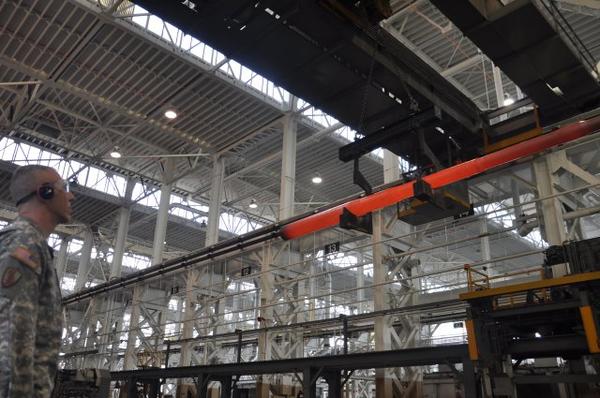Why Some Models Inspire Me to Do An Animation
 Steve K
Posts: 3,255
Steve K
Posts: 3,255
I buy a LOT of DAZ content, but spend most of my bucks on scenes - buildings, cities, structures, etc. Some of these are especially appealing because they just look right, i.e. like something a good engineer would design. Yes, I'm an engineer, albeit of the chemical persuasion, but I did have to take some courses in mechanical/civil type engineering and I am a member of the Amer. Society of Mechanical Engineers (long story). So when a structure just looks wrong, I keep on shopping.
I've been watching a very interesting video course from The Teaching Company titled "Understanding the World's Greatest Structures: Science and Innovation from Antiquity to Modernity". The professor is a Ph.D. in civil engineering and teaches at West Point. He's very enthusiastic and uses a lot of models for demonstration that I think he built himself. Also a lot of photos and diagrams of great structures. More info on the course here, including a short video trailer:
http://www.thegreatcourses.com/tgc/courses/course_detail.aspx?cid=1153
He's not just talking about the Eiffel Tower and similar famous structures, but buildings like the Watervliet Arsenal in New York, built in the 19th century (one of his favorites). The columns and beams supporting the whole structure show a great engineering mind at work, a man named Daniel Badger.
So FWIW, if you want to create convincing virtual models, maybe a little engineering is in order.
:coolsmile:




Comments
I am impressed by the buildings and machines designed and built long before FEA and CFD. With mathematics & engineering principals, observation, testing, modeling on a small scale, amazing things have been constructed ... buildings, ships, airplanes!
Indeed. From the course booklet that accompanies the DVD's: "From prehistoric times to the present day, the development of engineering design can be viewed in terms of two broad periods. First was the era of empirical design, from about 2500 BC to the Renaissance. Throughout this period, design was based entirely on experience with previous structures, sometimes guided by philosophical or geometric principles, but never by true science. Starting in the 17th century, the era of science-based design emerged from the discoveries of the Age of Reason. By the mid 1800's, the scientific methods of designing structures were fully established. They continue today, greatly enhanced by modern computer technology."
Here is a model that caught my eye recently:
http://www.daz3d.com/tithe-barn
As the description says, its based on the Great Coxwell Barn in England, built in the 14th century. "The real glories are however the great barns (erroneously called tithe barns or by estate agents tythe (sic) barns). These were the warehouses of the Middle Ages where vast quantities of food was stored, and they show the skill and craftsmanship of the medieval workman at its best. The biggest are enormous – Bradford on Avon and Tisbury, Wiltshire, Great Coxwell in Oxfordshire."
Here are a couple of websites the professor provided:
http://structurae.net/
http://www.loc.gov/pictures/collection/hh/
The first is a database of the world's greatest structures with lots of info. The second is a similar collection of American structures.
PBS has a series titled "Super Skyscrapers". A recent segment featured the "Shangai Tower", scheduled to open this year:
"The tower takes the form of nine cylindrical buildings stacked atop each other, totalling 121 floors, all enclosed by the inner layer of the glass façade. Between that and the outer layer, which twists as it rises, nine indoor zones will provide public space for visitors. Each of these nine areas will have its own atrium, featuring gardens, cafés, restaurants and retail space and providing 360-degree views of the city. Both layers of the façade will be transparent, and retail and event spaces will be provided at the tower's base. The transparent façade is a unique design feature, because most buildings have only a single façade using highly reflective glass to lower heat absorption, but the Shanghai Tower's double layer of glass will eliminate the need for either layer to be opaqued. Once opened, the tower is expected to accommodate as many as 16,000 people on a daily basis." (PBS said 30,000 people)
Part of the justification for such an extravaganza is "a testament to China’s economic success and the ambitions of the city’s wealthy elite." The residents (yes, they can live there in the "vertical city" with 320 hotel rooms) will escape the heat, cold, pollution, traffic, etc. that Shanghai's hoi polloi suffer.
So I can think of a number of plots for this animation, once someone creates the model (including full interior).